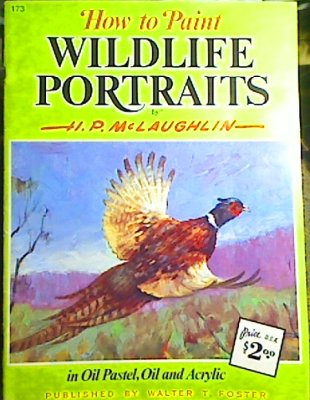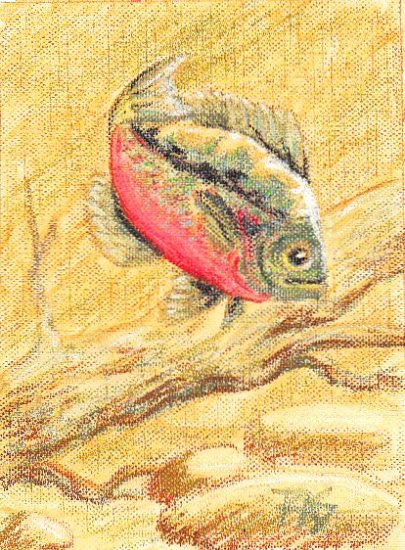Walter Foster 173 Reviewed
How to Paint Wildlife Portraits by H. P. McLaughlin


Walter Foster 173, How to Paint Wildlife Portraits in Oil Pastel, Oil and Acrylic by H. P. McLaughlin is a typical Walter Foster book. Either you love these or they bug you.
If you've never seen a Walter Foster book in either an art store, a bookstore, a craft store or a used bookstore, you haven't been shopping in any of these places. This popular series of art instruction books began in the 1940s or 50s when illustrator Walter Foster decided to make art instruction inexpensive and created an unusual format. He used heavy, high quality all-rag paper and saddle stapled very large books with few pages, the usual size is 10 1/4" x 13 1/2".
They may not fit very well on shelves but the format is concise, emphasizing images and demonstrations over text. After his initial volumes were such a great success, Foster began contacting other artists to write them and soon the series developed into a longstanding tradition -- always with the same concise writing and high quality four color reproduction on good rag paper. They were ludicrously cheap when they were new. This one, Walter Foster 173, was $2.00 for all those good pages.
H. P. McLaughlin is an accomplished wildlife painter. He fell into the Foster format as if born to it, breaking down a wide variety of paintings and sketches in oils, acrylics and oil pastel into stages and step by step projects with very little text. You learn most from the photos in these. Every painting was intended to be copied by generations of students. He has authored at least one more of these besides Walter Foster 173, a volume entirely on oil pastels.
In one page of text, McLaughlin freely suggests transposing these step by step projects into other mediums and changing them, using your own color choices instead of the hues he used and just testing them to see if they look good. His sense of when to stop and photograph a stage is impeccable, each photo teaches a dozen different things about wildlife rendering.
What he does not teach is how to do the initial sketch at all. Walter Foster 173 is about painting, not drawing. If you want to learn to draw wildlife, look for other titles on drawing wildlife and blocking it in. No photo references are provided, only sketch through intermediate stages of each painting with brief instructions mentioning which medium was used and what colors you can mix to get his hues.
It takes work to use a Walter Foster book with this format, but it can be very rewarding work. They used to frustrate me when I was younger and had more trouble drawing. Today, I chose one of his acrylic paintings and followed the stages from the beginning with oil pastel, skipping the pencil drawing stage to sketch with an oil pastel.
Below is my Sunfish in Faber-Castell Studio oil pastels on canvas paper. Turpentine was used to wash the background layers and early layers on the fish and background elements, then I began working dry to build up more color. It transposed well and the stages were easy to follow even using a different medium.
To do the exercises in Walter Foster 173, McLaughlin advises getting a set of oil pastels with at least 18 or 24 colors, then just approximating the colors he uses in oils and acrylics. The book is useful for techniques in painting in any of these mediums and would be rewarding to anyone who enjoys wildlife painting. Much more is shown than told.

I used Faber Castell Studio oil pastels in a set of 36, odorless turpenoid and canvas paper to do the Sunfish study from page 14 as an example of the type of works you can do from Walter Foster 173. I enjoyed doing it and I do find Walter Foster books to be stimulating. If you do, this one will show you some gorgeous oil pastel techniques and give many good ideas for wildlife paintings.
